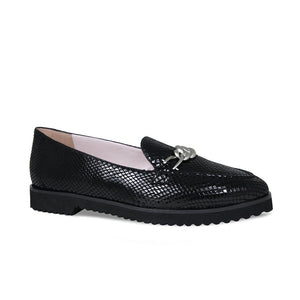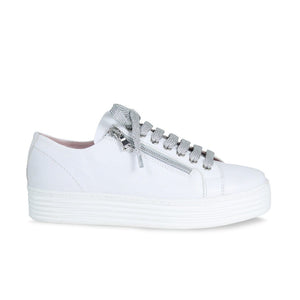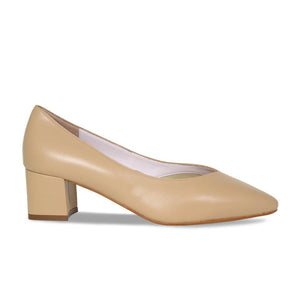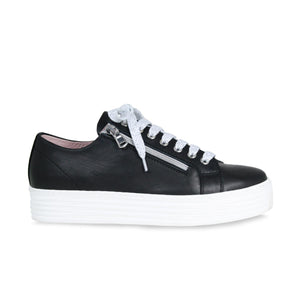Everything you need to know about Heel Spurs & Plantar Fasciitis!
Are you wondering what is a heel spur and what causes heel spurs? If you are suffering with shooting pain in the heel or other heel spur symptoms, Sole Bliss is here to help!
Heel spurs can affect 1 in 10 people, but often only half have painful symptoms. If you are suffering with heel spur symptoms, we will explain how to help your heel pain and what you can do about heel spurs.
Heel spurs are often mistaken for plantar fasciitis, but plantar fasciitis is more painful than a heel spur and involves intense, sharp pain which runs from your heel to your toes. Heel spurs occur when your heel bone spurs or calcium deposits on the heel bone, whereas plantar fasciitis is a type of inflammation on the plantar fascia.
The Relationship Between Plantar Fasciitis and Heel Spurs
What is a heel spur? What is plantar fasciitis? Heel spurs and plantar fasciitis are often confused with one another. If you have developed a heel spur, it is commonly a result of untreated plantar fasciitis. If the plantar fascia tendon is damaged for a long time, the body will eventually create a heel spur to provide additional support for the heel.
Heel spurs are not always as painful as plantar fasciitis. However, some people do suffer with heel pain caused by both. This is why it’s incredibly important to wear comfortable shoes for heel spurs with extra cushioning and support.
If you suffer from sharp heel pain, you may well be suffering from a common foot condition known as plantar fasciitis. Plantar fasciitis is the inflammation of the plantar fascia, a thick band of tissue connecting your heel to the front of your foot. Plantar fasciitis occurs when this tissue is damaged or torn, which causes pain when your heel hits the ground. Click here to view our best shoes for plantar fasciitis.
What is a Heel Spur?
What is a heel spur? This condition, which an estimated 1 in 10 people suffer with, is a bone-like protrusion that forms between the heel and arch of the foot. Heel spurs are a form of calcium deposit that develop on the underside of the heel bone. Due to repeated stress, they can slowly start to form on the heel, growing over a period of several months. They can range in size and shape and are usually painless but sometimes heel spur symptoms can include shooting pain in the heel.
How are heel spurs and Plantar Fasciitis similar?
Heel spurs and plantar fasciitis can often be mistaken for each other. If you are wondering what does a heel spur feel like, it can feel very similar to plantar fasciitis.
Heel spurs and plantar fasciitis have also have similar risk factors. Factors which increase the chances of developing either plantar fasciitis or heel spurs are:
- Tight calf muscles, which can place strain on the heel and put the plantar fascia under perpetual tension.
- Obesity can create more stress on the foot as there is more weight to bear and results in a higher chance of developing heel spurs or plantar fasciitis.
- Wearing improper shoes that do not have adequate support. Ill-fitting and worn-out shoes can cause heel spurs and plantar fasciitis. Sole Bliss shoes are designed to prevent heel spurs and plantar fasciitis and can alleviate the pain. Click here to view our collection heel spur shoes.
- Depending on your foot dynamics, the presence of either flat feet or high arches can put more stress on different parts of the foot.
- Prolonged repetitive activities requiring you to stand on your feet for a long time daily, or high-impact sports like running, jumping, and hiking can all increase your chances of developing these conditions.
How can you tell if you have a Heel Spur or Plantar Fasciitis?
Plantar fasciitis is the most common cause of heel pain. An estimated 2 million people are treated for the condition every year! Inflammation and irritation come as a result of the damaged tissue and this is what causes the shooting pain in the heel.
One of the first differences you can identify between plantar fasciitis and heel spurs is that with plantar fasciitis, the pain is usually felt during your first few steps in the morning, after prolonged sitting, or after exercise.
The most significant difference between the heel spurs and plantar fasciitis is that heel spurs may not cause pain, while plantar fasciitis always will.
The location of the pain is also in different places. Plantar fasciitis pain is typically present in the foot arch and the heel, and pain due to heel spurs is mostly found in the heel bone. The pain also feels slightly different: plantar fasciitis causes a sharp and burning sensation whereas heel spurs cause a stabbing or shooting pain in the heel.
Can you have Heel Spurs without Plantar Fasciitis?
An estimated 50% of patients who suffer with plantar fasciitis also find they have a heel spur. However, you can experience just having a heel spur which is usually far less painful than plantar fasciitis.
How do you treat Heel Spurs and Plantar Fasciitis?
To treat both heel spurs and plantar fasciitis nonsurgical treatments are always recommended first and are usually successful. The most recommended treatments include rest; applying ice to the affected area; a change in footwear (click here to browse our shoes for heel spurs and shoes for plantar fasciitis), ensuring they are cushioned and the right fit; silicon heel cups that protect the heel of your foot; memory foam cushioned insoles, physical therapy and cortisone injections.
What are the best shoes designed for Heel Spurs and Plantar Fasciitis?
If you suffer with either plantar fasciitis or a heel spur, it is very important to wear the correct footwear. Everything you need for comfortable heel spur shoes can be found in Sole Bliss shoes! All our shoes feature a triple-layer memory foam cushioning system which provides shock absorbency, soft cushioning and a contoured footbed to offer custom support.
The best heel spur shoes offer a thick cushioned sole, a wide, roomy toe-box and a soft, supportive upper. We would recommend trying our beloved Miracle sneakers, which are designed to soothe the pain of heel spurs and plantar fasciitis.
All Sole Bliss shoes for heel spurs and plantar fasciitis feature our Award-Winning triple-layer memory foam cushioned sole and offer a supportive soft leather upper, together with a wide toe box to provide extra comfort and space.
Our wide range of comfortable and cushioned low flats and heels are also fantastic options to go for if you’re looking for a style you can wear for all day and night!
All Sole Bliss shoes are designed for people who suffer with wide feet, bunions and other foot problems like heel spurs and plantar fasciitis. They provide a generous fit which never cramps toes, a stretch panel to accommodate difficult joints, and a luxuriously soft and supportive insole.
So now you know the difference between a heel spur and plantar fasciitis and the ways you can identify which one you may have, which style will you be choosing to comfort your feet?
Shop our collection for heel spurs and plantar fasciitis NOW!




















